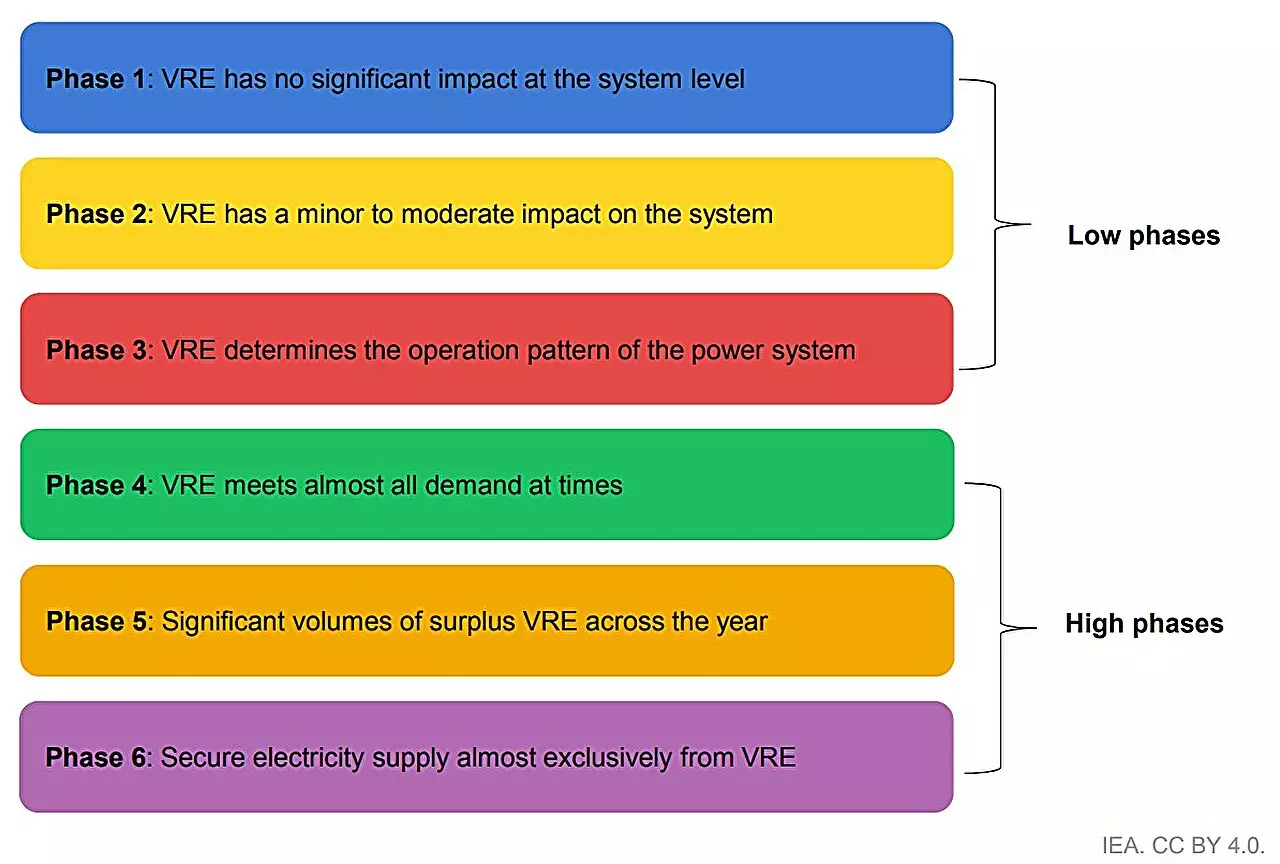

The energy landscape is undergoing a significant transformation as solar photovoltaic (PV) and wind technologies expand at an unprecedented rate. The International Energy Agency (IEA) has recently published a compelling report, “Integrating Solar and Wind: Global Experience and Emerging Challenges,” which documents the rapid growth of these renewable energy sources and emphasizes the necessity for governments to facilitate their seamless integration into existing power systems. The data from this report reveal a doubling of capacity and generation share over recent years, indicating a clear trajectory towards increased reliance on renewables in the global energy mix.
One of the key findings of the report underscores the importance of supportive governmental policies and robust infrastructure in fostering this energy transition. Without appropriate mechanisms to support the integration of solar and wind power, nations risk failing to capitalize on the profound benefits these technologies offer. The report warns that any delay in implementation could lead to a significant reduction—up to 15%—in the generation capacity of these renewables by 2030. Moreover, a diminished share of these technologies in the global electricity matrix could hinder climate goals aimed at achieving net-zero emissions by mid-century.
The primary challenge lies in effectively melding variable renewable energy (VRE) sources into power systems that were traditionally designed to accommodate more predictable energy outputs. This necessitates not only strategic policy-making but also innovative infrastructure development. For instance, the report encourages a systematic approach to enhancing grid flexibility and improving forecasting mechanisms, which are vital for managing the inherent variability of solar and wind resources.
A notable contribution of the report is its unique global stocktake of integration measures in 50 power systems that collectively account for nearly 90% of current solar and wind generation globally. This comprehensive assessment provides a foundation for understanding the varying challenges faced by different regions as they push toward higher penetration of renewable sources. Countries lacking significant VRE in their electricity mixes can potentially identify and adopt best practices without implementing extensive system-wide reforms.
For instance, gradual enhancements to existing infrastructure—such as improving the adaptability of current energy assets—can accommodate increased solar and wind outputs. This tactic has proven effective for many countries, enabling them to scale renewable deployment without overwhelming their energy systems.
However, as more regions escalate their share of VRE, they will encounter greater complexity in maintaining grid stability. Herein lies the importance of frontrunner countries like Denmark, Ireland, and South Australia, which have successfully navigated these challenges. Their experiences demonstrate that developing advanced storage solutions and next-generation grid technologies is essential to balancing the intermittent nature of renewable energy sources.
The urgency of the matter cannot be overstated. To harness the full potential of renewable energy and mitigate the anticipated risks associated with its integration, significant efforts must be mobilized. Current technology solutions for enhancing stability and flexibility in energy systems are largely available and mature. Their effective implementation, however, relies on proactive and innovative policy frameworks that address the specific needs of each power system.
As energy demand continues to rise and global temperatures escalate, there is no time to waste. The report underlines that a fundamental shift in how power systems are planned and operated is imperative for accommodating renewable sources effectively. Policymakers must recognize the pressing need for coordinated action and make informed decisions that will pave the way for sustainable energy transitions.
The IEA’s report presents an enlightening look at the growth of solar PV and wind energy and the essential steps required for successful integration into modern power systems. The transition to renewable energy is not merely a technological challenge but also a call for comprehensive policy measures and forward-thinking strategies. Only through concerted efforts, innovative solutions, and global cooperation can we optimize the benefits of solar and wind energy and forge a true path towards a sustainable energy future. The time for action is now, as the world stands on the brink of a renewable revolution that, if harnessed correctly, could lead to unparalleled environmental and economic benefits.
Rogue waves have long been a subject of fascination and terror in maritime lore. These…
As the world grapples with public health challenges, especially those posed by infectious diseases, the…
The Sombrero Galaxy, also known as Messier 104, embodies a breathtaking blend of spirals and…
In recent advances in quantum electronics, a groundbreaking discovery leveraging the concept of kink states…
In the intricate tapestry of nature, ice often exists in a delicate balance with liquid…
In an astonishing event that captured global attention, a rogue object from beyond our Solar…
This website uses cookies.